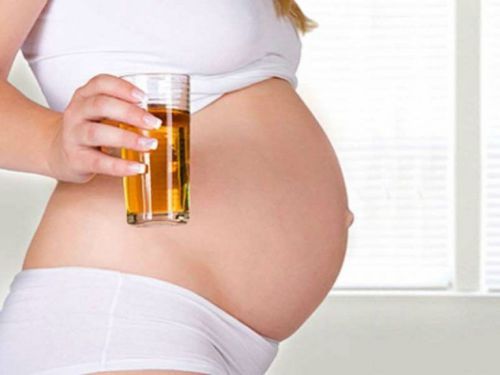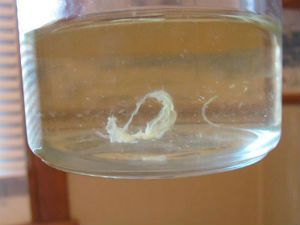Pain localized in the lumbar region on one or both sides, may indicate the beginning of the pathological process in the kidneys, and other organs of the abdominal cavity, small pelvis or the challenges hidden in the musculoskeletal system.
Before proceeding to the question of treatment, it is necessary to clearly understand why and why did these pains, because the treatment of each disease is quite different, especially if the initial diagnosis of the disease difficult.
In women, the kidneys suffer more often than men, due to the specific structure of the urethra, by which infectious agents quite easily penetrate into the tissue of the organ (urethra have wide, straight and short).
Due to the fact that the kidneys perform several important functions that any pathological processes affect the body and General health the patient. It is very important to recognize the symptoms of the disease and begin necessary treatment.
The main causes of pain in the kidneys in women
Pain syndrome or other unpleasant sensations in the projection of one or both kidneys, may indicate the beginning of one of the following diseases of the urinary system:
- inflammation of the glomerular apparatus of kidneys (different variants of acute or chronic glomerulonephritis);
- the inflammatory process in the cups or pelvis (acute or chronic pyelonephritis);
- urolithiasis (promotion formed of ureteral stones down the urinary tract, or the displacement of the stone relative to its original bed);
- thrombosis of the renal vessels (in the background of atherosclerotic changes, blood clots or emboli that block the lumen of a blood vessel);
- cystic degeneration of the kidney on the background of polycystic disease (completely destroyed the normal structure of the body), or a patient isolated cysts filled with different contents (pus, blood, and others);
- the renal tuberculosis (infection with Mycobacterium tuberculosis);
- the omission of one or both kidneys (varying degrees of nephroptosis), as well as the organ from its anatomical bed (up to lowering it into the pelvic cavity);
- tumor proliferation in the tissues of the kidneys in women, or other space-occupying lesions that compress the major vessels or nerve plexus;
- injury to the body, which results in the rupture of the capsule or crushing;
- rejection of the transplanted kidney (for example, on the background of insufficient donor compatibility).
Tuberculosis of the kidney is one of the reasons for the emergence pain syndrome
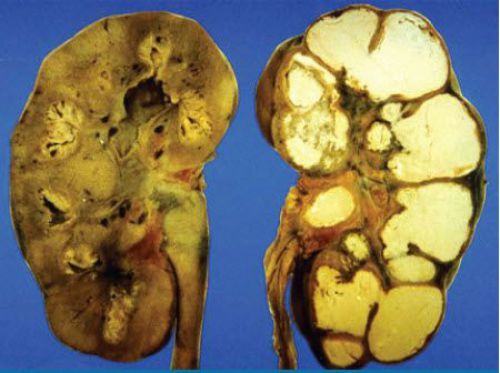
It is worth noting that there are situations coldpack have women suffer in a number of physiological reasons which do not require any emergency interventions, we need only dynamic monitoring of the patient.
The reasons for this may be:
- Water congestion of the kidneys, that is the use of large volumes of liquid over a short period of time. Glomerular apparatus fails to cope with its filtration, which is expressed in the form of unpleasant sensations in the lumbar region.
- Intense sports activities or other types of physical activity, which is many times increase the speed of blood flow, which adversely affects the health of not only kidneys, but also the entire body.
- Pregnancy (most often 1st and 3rd trimesters), when there is active growth of the uterus and compression of its related bodies, including kidneys and other parts of the urinary tract.
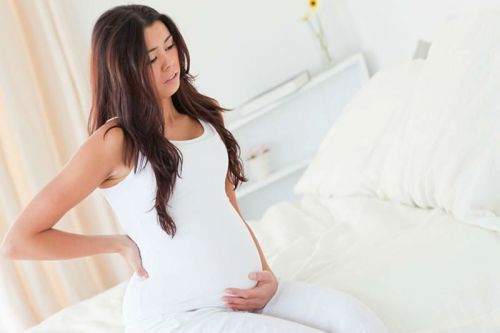
Often on the background of pregnancy in women occurs gestational pyelonephritis, or is the formation of stones due to stasis of urine
Adverse factors
There are so-called “push” mechanisms, which provoke the appearance of pain syndrome.

These include:
- the presence of chronic foci of infection in different locations, of which possible continuous screening of pathogens (e.g., chronic salpingitis or adnexitis in women) – this is why it is essential to treat any inflammation in the body;
- long-existing diabetes or hypertension, against which there are irreversible changes in the vessels of the kidney, violated the processes of circulation and filtration, a body gradually shrinks;
- low immune status of the patient (for example, consequence of chemotherapy or radiotherapy, she had the presence of HIV infection, etc.);
- violations of the exchange character on the background of diseases of the thyroid gland, adrenal glands and others;
- common hypothermia of the entire body or zastuzheny feet, bathing in cold water, prolonged draught, etc.;
- malnutrition, insufficient intake of vitamins and minerals from food;
- insufficient amount of fluids you drink during the day;
- anatomical defects in different parts of the urinary tract (e.g., horseshoe kidney);
- previous surgery (e.g. cyst removal);
- the low level of personal hygiene in women (irregular washing away) or multiple sexual relations without the use of barrier contraception.
Unbalanced diet affects the metabolic processes in the body that contributes to stone formation
Options “kidney” pain syndrome depending on the underlying disease
Pain in the kidneys has a different intensity and clinical picture that is determined by pathological processes in the body.It can occur suddenly, or provoke physical activity, exercise, intercourse, bathing in cold water etc. It plays the role for further diagnosis.
For attack of renal colic characterized by pain of high intensity, which occurs suddenly and finds a woman “by surprise”. Pain syndrome is so intense that it makes the patient thrashing around and moaning from the sharp sensations. At the peak of pain possible nausea and vomiting.
For pyelonephritis and glomerulonephritis characteristic of unilateral blunt or nouse-throbbing pain, which has the same intensity throughout the day, a little stop in the supine position on the healthy side.
Pain increasing gradually, which is associated with progressive inflammation and edema in the tissues of the body. A sign of a beating in the projection of the affected kidney positive or strongly positive.
When the nephroptosis there are unilateral or bilateral aching or nagging pain, aggravated by prolonged stay in an upright position. In the initial stages of development of the disease the woman’s condition is normalized after relaxing. Gradually, however, is an even greater omission of the kidneys, which causes of increased pain, which persists even in the supine position.
To tumor characteristic and low-intensity periodic unpleasant sensations on the side of the lesion, which intensified with the growth of the pathological focus, which can compress the nerve endings. In the end, the kidney hurts constantly, depriving the woman of sleep and rest.
Other symptoms that need to pay attention
Usually, pain is not the only symptom of incipient disease, he could be accompanied by the following unpleasant symptoms:
- patients complain of fever, malaise, unexplained weakness, loss of appetite and other symptoms of intoxication;
- often disturbed the process of urination (it is frequent, painful, appear cramping, burning sensation etc.), thus changing the color of the urine (appear flakes, blood or pus, etc.);
- lumbar region on the affected side swells and turns red when attempting to knock in this place, the pain increases and it is possible irradiation in the abdomen, groin or thighs;
- edema on the face, which gradually sink down (the neck, hands, etc.);
- blood pressure becomes unstable, there is a trend to a sharp increase;
- change the daily amount of urine (if renal failure becomes smaller);
- possible causeless loss of weight, sweating at nights and on the background of a slight physical exertion, frequent nausea etc.
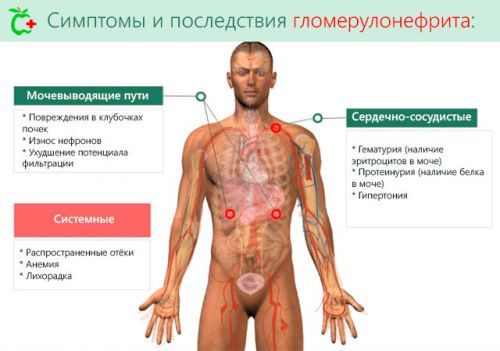
Glomerulonephritis is one of the reasons for kidney pain
Other causes of back pain in women
Especially important at the stage of primary diagnosis, to distinguish kidney pain from other unpleasant sensations of the same localization.
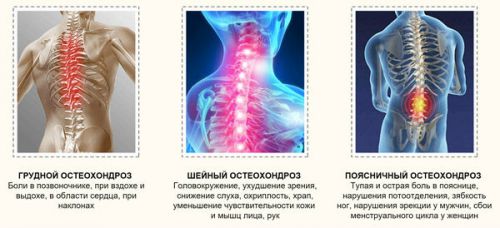
Below we will talk about what symptoms are characteristic for pathological processes in the musculoskeletal apparatus:
- the pain associated with a lesion of the spine, most often localized in the “center” that is in the midline running through the spine;
- this pain occurs during movement and bending, due to the direct participation of the musculoskeletal system;
- typical irradiation of pain, according to the level of innervation of the pinched nerve root;
- possible sensory disorders due to the interruption of nerve impulses going through the nerve fibers (“pins and needles”, loss of sensitivity, etc.);
- usually posture reduces pain or eliminates them completely (e.g., supine);
- the woman does not have any symptoms of intoxication, the temperature remains normal.
The use of ointments with analgesic and antispasmodic effect, reduces pain and increases range of motion in the spine.
Osteochondrosis any part of the spine is always accompanied by pain syndrome
What needs to be done if women are to be treated?
Before the treatment of kidney pains, you must seek the assistance of a specialist who can identify the root cause of this condition, because a lot of them.
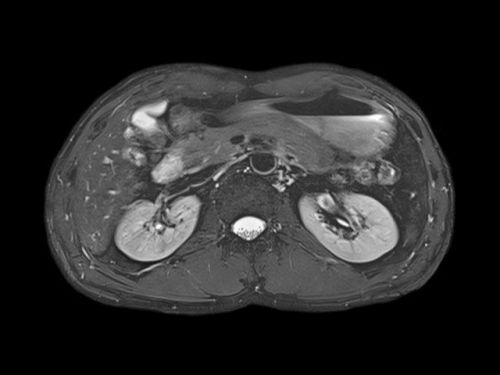
Diagnosis of possible diseases is reduced to a series of laboratory and instrumental studies:
- General analysis of blood and urine (indicates inflammatory changes, elevated levels of leukocytes and bacteria in the urine in infectious processes, etc.);
- biochemical analysis of blood (mandatory determine metrics such as total protein and protein fractions, creatinine, urea, fibrinogen, hsCRP, uric acid and others);
- urine analysis according to Nechyporenko (this enables an accurate count of erythrocytes and leukocytes in urinary sediment);
- a urine culture on nutrient medium (made up to the moment the patient begins to antibacterial drugs, which will allow you to identify infectious agent);
- review and excretory urography;
- Ultrasound of the urinary system.
CT and MRI of the kidneys using contrast agents (are the methods with the highest information content and reliability).
Thanks to magnetic resonance imaging there is a possibility of detecting even a minimal education, and lesions in the tissues of the kidneys
Kidney pain always indicate the beginning of a pathologic process in a woman’s body that requires immediate treatment to the appropriate specialist (doctor or urological therapeutic profile).
You need to understand that every kidney disease requires an individual approach and appropriate therapy, as determined by the main cause of this condition. It is not necessary to self-medicate and uncontrollably to take pain medications that can only temporarily reduce pain, but does not affect the etiology (cause) of disease.
It is important to be treated only under the supervision of a doctor who knows how to treat a particular disease.


